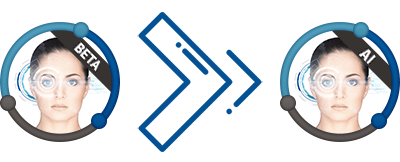Londinia is out of its BETA version!
-
- 0
- 1321
- 0
Almost 6 months after the launch of our artificial intelligence, we are proud and happy to announce that the Beta test phase is officially over for Londinia. The latest user feedback has enabled us to make significant improvements that enable it to generate even more relevant analyses.

Londinia was launched in June 2019 in a BETA version.
Nearly 6 months and 30,000 technical analyses later, Londinia is now available in its full and improved version. The results and feedback from analyses were reworked and simulated under real market conditions to make changes and improvements to the artificial intelligence.
As a reminder, today, our artificial intelligence is:
Since its launch, Londinia has been given many improvements, some of which have had a greater impact than others. In fact, over time and with the increasing amounts of data processed, it is inevitable that the developments validated and integrated into our artificial intelligence engine are very specific and that they are less visible in the analysis results. This is typically the case when an indicator weighting is slightly adjusted on only one specific asset.
What major improvements enabled Londinia to come out of its Beta version?
If you have any questions, feel free to post them as a comment on this article. I will be happy to answer you.

Londinia was launched in June 2019 in a BETA version.
Nearly 6 months and 30,000 technical analyses later, Londinia is now available in its full and improved version. The results and feedback from analyses were reworked and simulated under real market conditions to make changes and improvements to the artificial intelligence.
As a reminder, today, our artificial intelligence is:
- Price histories for over 220,000 financial instruments
- 9 calculation periods and 4 time units
- 18 types of technical indicator
- 6 market scanners (chart patterns, Japanese candlesticks, technical indicators, volumes, gaps and records)
- Over 150 detections from these 6 market scanners
- More than 120 trend and momentum signals from technical indicators and moving averages
- Resistance and support, as well as ProRealTrend
- More than19 million results, updated with more than135 million calculations running in a loop.
Since its launch, Londinia has been given many improvements, some of which have had a greater impact than others. In fact, over time and with the increasing amounts of data processed, it is inevitable that the developments validated and integrated into our artificial intelligence engine are very specific and that they are less visible in the analysis results. This is typically the case when an indicator weighting is slightly adjusted on only one specific asset.
What major improvements enabled Londinia to come out of its Beta version?
- Optimization of short/medium/long-term trend definitions
- Addition of new detections such as discrepancies (RSI, CCI, MACD) and reversal of the MOMENTUM indicator
- Significant improvements in invalidation thresholds and price targets depending on the instrument and its market
- Creation of a strength indicator
- Addition of new patterns of interpretation of technical data
- Integration of new data interpretations and new responses from artificial intelligence.
If you have any questions, feel free to post them as a comment on this article. I will be happy to answer you.
About author
- 20
- 42
- 60
- 6





